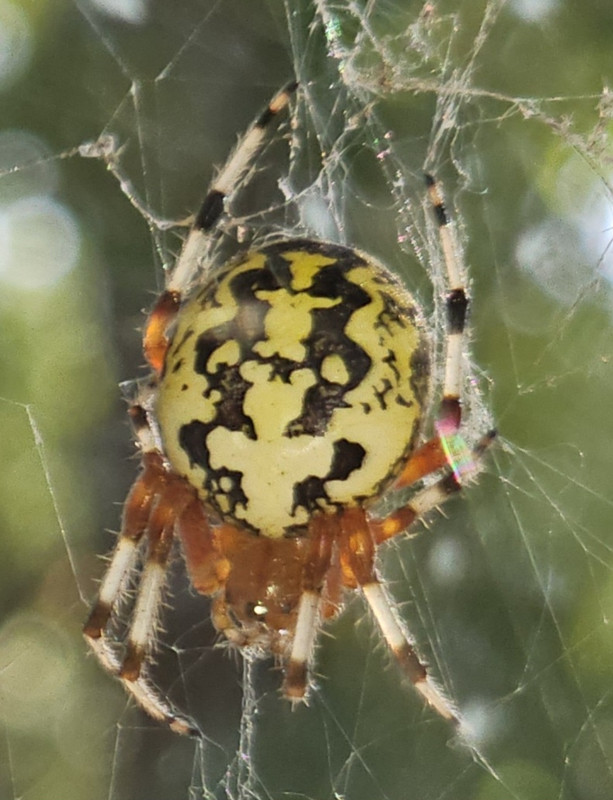Spider!
-

-
Somewhat related
https://phys.org/news/2023-09-large-fossil-spider-australia.htmlA team of Australian scientists led by Australian Museum (AM) and University of New South Wales (UNSW) paleontologist Dr. Matthew McCurry have formally named and described a fossil spider, Megamonodontium mccluskyi, which is between 11–16 million years old.
Found at McGraths Flat, NSW, a fossil site known for its iron-rich rock called "goethite," the new genus of spider is the first ever spider fossil of the Barychelidae family to be found. Similar to the living genus, Monodontium (a brushed trapdoor spider) but five times larger (carapace length, ~10 mm; entire spider, ~50mm from toe to toe),.

-
It's a Marbled Orb-Weaver
Cool. The other day I bought a small shop-vac to (finally) suck up all the spider webs on the outside of the house. Most webs were for grass spiders and other types, but one was a bit bigger and gnarly, turned out to be a cat-faced orb weaver, similar to the above. Let's just say I left the shop vac on for a while after I sucked it in to make sure it was dead.
Oh the irony when I put up some halloween spider webs in a few days.
-
New Blue Tarantula Species Discovered in Thailand
Link to video
Go to about 1:30 of the video aboveBetween the sky and sea, nature appears to favor blue, as do we humans.
Yet the color is rare in nature—especially not in “a blue-violet hue resembling the color of electrical sparks,” which is how a research team described a new species of tarantula in southern Thailand. The spider, which can measure nearly three inches long, sports iridescent streaks of neon color on its legs, back, and mouthparts.
The spider, named Chilobrachys natanicharum, was already known in the pet trade as the electric blue tarantula, but a recent study published in the journal Zookeys finally confirmed it as a unique species.
For the study, Chomphuhuang and colleagues went on an expedition to the mangroves of Phang-Nga Province, searching at night in the humid, muddy vegetation for a tarantula’s telltale sign: Shroud-like webs covering its burrow
